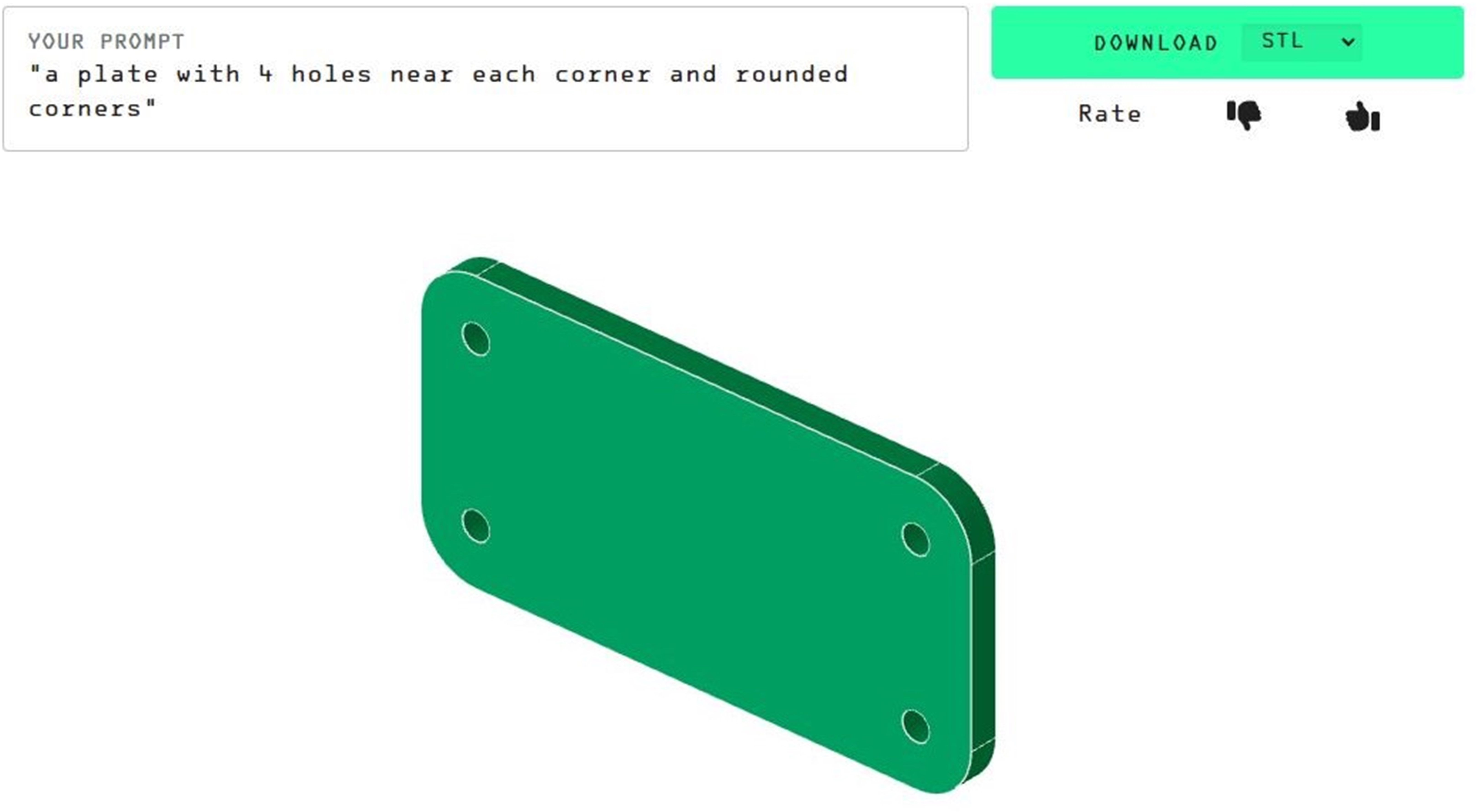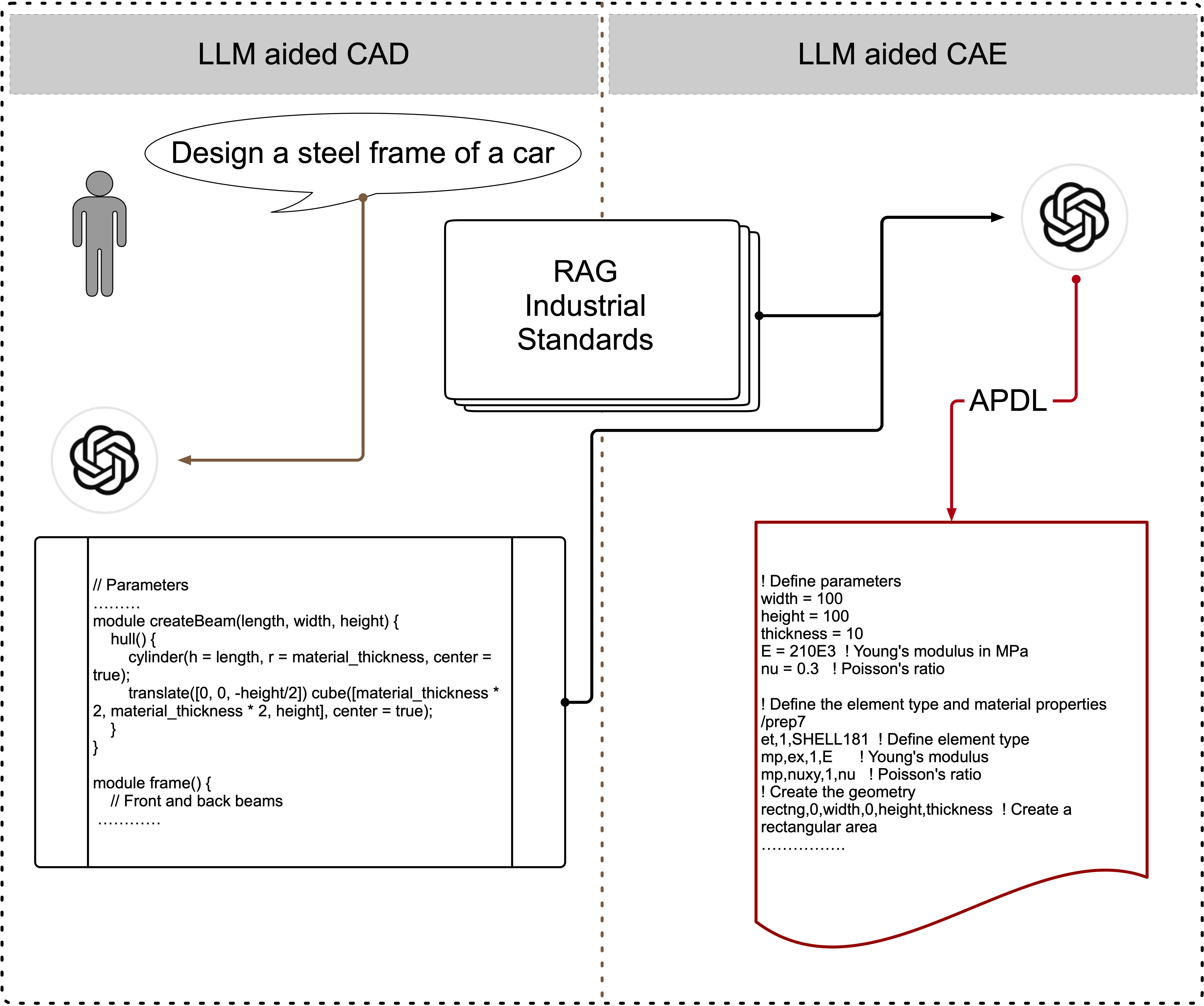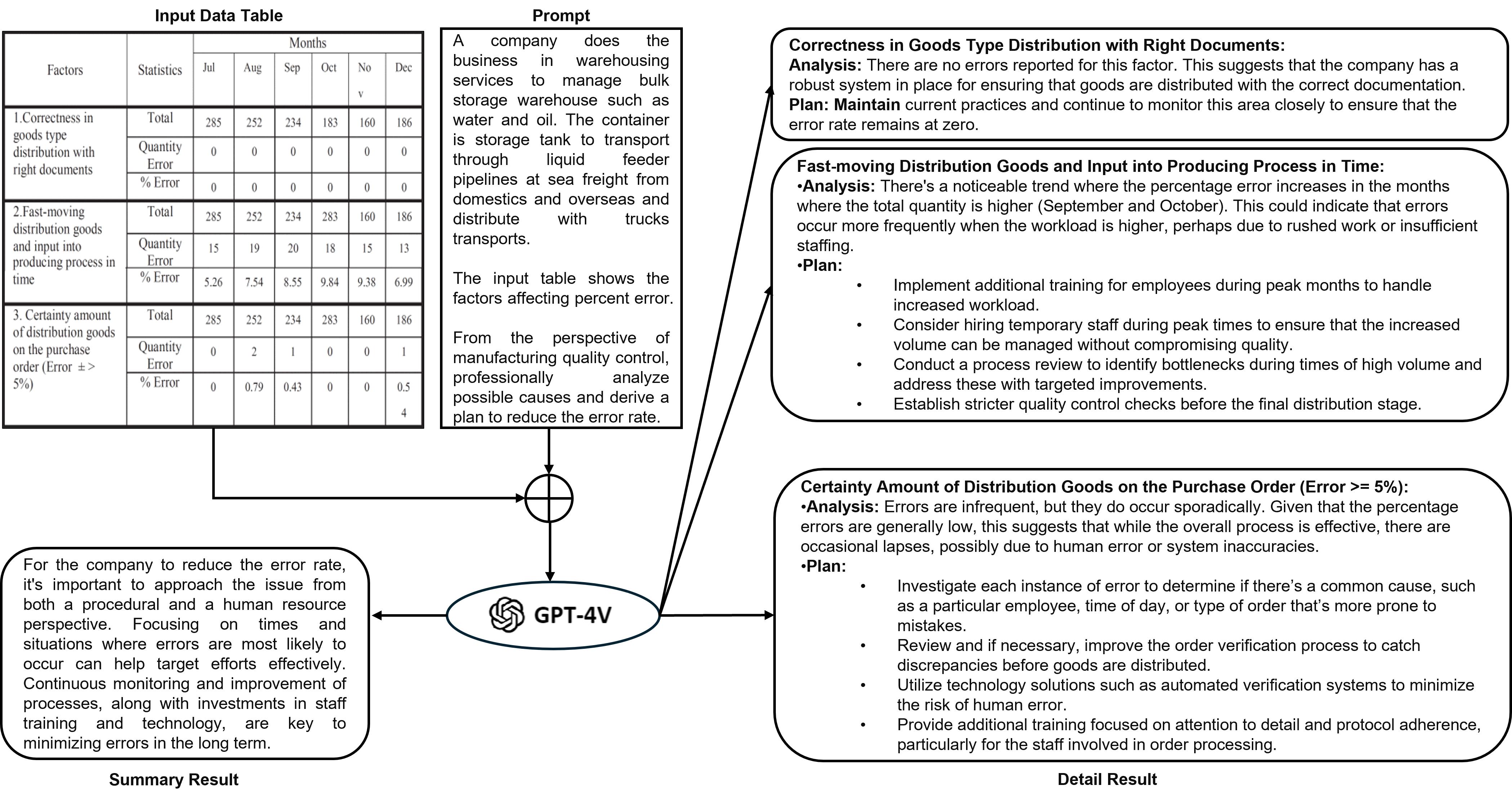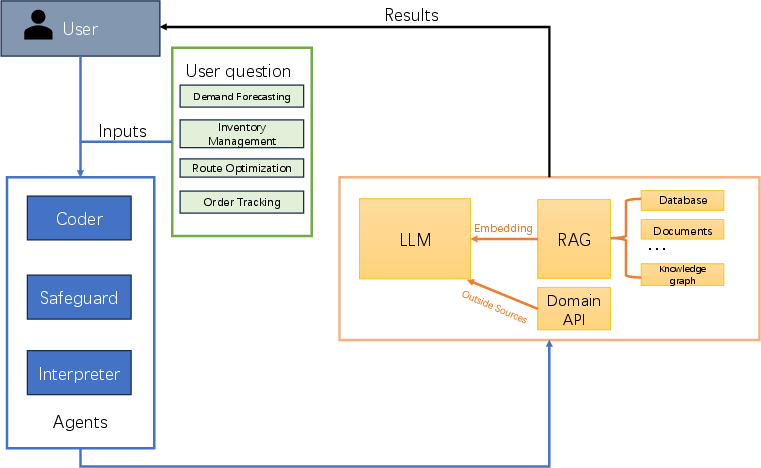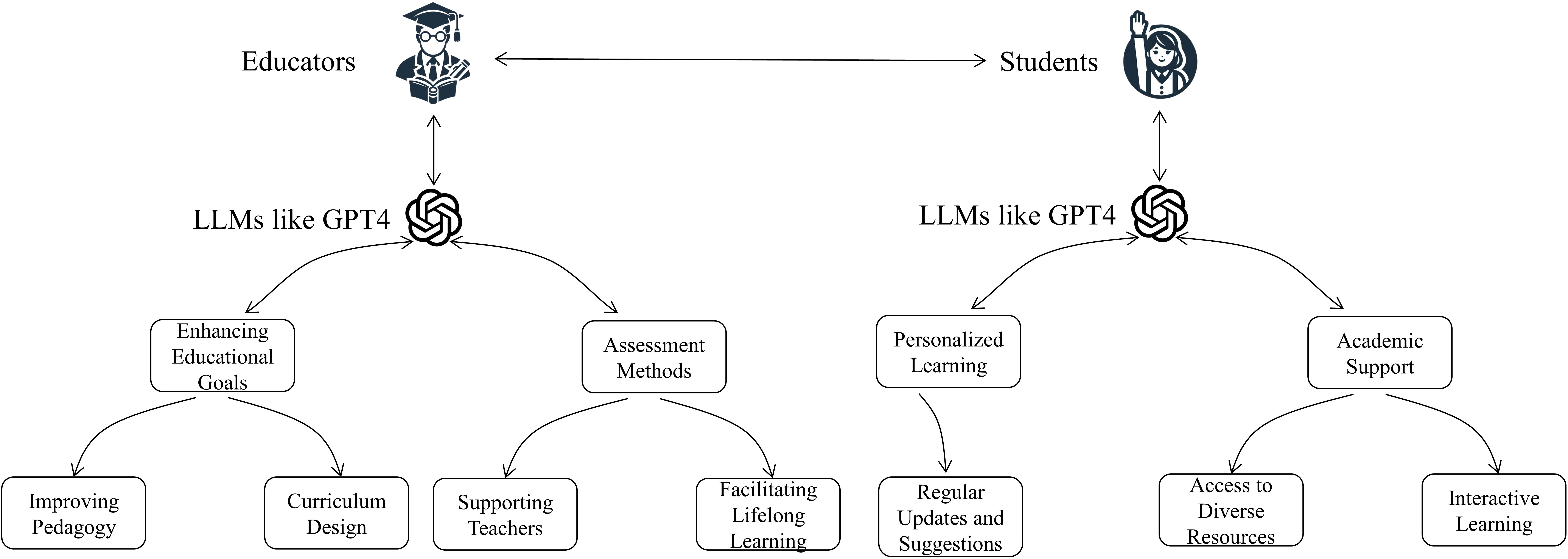Large Language Models for Manufacturing (2410.21418v1)
Abstract: The rapid advances in LLMs have the potential to transform manufacturing industry, offering new opportunities to optimize processes, improve efficiency, and drive innovation. This paper provides a comprehensive exploration of the integration of LLMs into the manufacturing domain, focusing on their potential to automate and enhance various aspects of manufacturing, from product design and development to quality control, supply chain optimization, and talent management. Through extensive evaluations across multiple manufacturing tasks, we demonstrate the remarkable capabilities of state-of-the-art LLMs, such as GPT-4V, in understanding and executing complex instructions, extracting valuable insights from vast amounts of data, and facilitating knowledge sharing. We also delve into the transformative potential of LLMs in reshaping manufacturing education, automating coding processes, enhancing robot control systems, and enabling the creation of immersive, data-rich virtual environments through the industrial metaverse. By highlighting the practical applications and emerging use cases of LLMs in manufacturing, this paper aims to provide a valuable resource for professionals, researchers, and decision-makers seeking to harness the power of these technologies to address real-world challenges, drive operational excellence, and unlock sustainable growth in an increasingly competitive landscape.
- Large language models in medical education: opportunities, challenges, and future directions. JMIR Medical Education, 9(1):e48291, 2023.
- Accurate structure prediction of biomolecular interactions with alphafold 3. Nature, pages 1–3, 2024.
- Vqa: Visual question answering. In Proceedings of the IEEE international conference on computer vision, pages 2425–2433, 2015.
- Beyond traditional teaching: The potential of large language models and chatbots in graduate engineering education. arXiv preprint arXiv:2309.13059, 2023.
- Sanjar Adilov. Generative pre-training from molecules. ChemRxiv:10.26434/chemrxiv-2021-5fwjd, 2021.
- Handbook of Financial Time Series. Springer Publishing Company, Incorporated, 2016.
- Workforce and supply chain disruption as a digital and technological innovation opportunity for resilient manufacturing systems in the covid-19 pandemic. Computers & Industrial Engineering, 169:108158, 2022.
- Business contract analysis using deep learning: a survey. Neural Computing and Applications, 34(21):18195–18218, 2022.
- Syed Rameel Ahmad. Enhancing multilingual information retrieval in mixed human resources environments: A rag model implementation for multicultural enterprise. arXiv preprint arXiv:2401.01511, 2024.
- On the application of sentence transformers to automatic short answer grading in blended assessment. In 2022 33rd Irish Signals and Systems Conference (ISSC), pages 1–6. IEEE, 2022.
- Overcoming llm challenges using rag-driven precision in coffee leaf disease remediation. arXiv e-prints, pages arXiv–2405, 2024.
- Program synthesis with large language models. arXiv preprint arXiv:2108.07732, 2021.
- De novo protein design by deep network hallucination. Nature, 600(7889):547–552, 2021.
- Inverse design and ai/deep generative networks in food design: a comprehensive review. Trends in Food Science & Technology, 2023.
- An optimized collaborative scheduling algorithm for prioritized tasks with shared resources in mobile-edge and cloud computing systems. Mobile Networks and Applications, 27(4):1444–1460, 2022.
- Arash Bahrammirzaee. A comparative survey of artificial intelligence applications in finance: artificial neural networks, expert system and hybrid intelligent systems. Neural Computing and Applications, 19(8):1165–1195, 2010.
- Molgpt: molecular generation using a transformer-decoder model. Journal of Chemical Information and Modeling, 62(9):2064–2076, 2021.
- Rt-2: Vision-language-action models transfer web knowledge to robotic control. arXiv preprint arXiv:2307.15818, 2023.
- A brief overview of the use of collaborative robots in industry 4.0: Human role and safety. Occupational and environmental safety and health, pages 641–650, 2019.
- Focus: Big data: Chatgpt and the future of journal reviews: A feasibility study. The Yale Journal of Biology and Medicine, 96(3):415, 2023.
- Improving image generation with better captions. Computer Science. https://cdn. openai. com/papers/dall-e-3. pdf, 2(3):8, 2023.
- Chip-chat: Challenges and opportunities in conversational hardware design. In 2023 ACM/IEEE 5th Workshop on Machine Learning for CAD (MLCAD), pages 1–6, 2023.
- Assessing the capabilities of chatgpt to improve additive manufacturing troubleshooting. Advanced Industrial and Engineering Polymer Research, 6(3):278–287, 2023.
- Additive manufacturing methods and modelling approaches: a critical review. The International Journal of Advanced Manufacturing Technology, 83:389–405, 2016.
- Real-time inspection in detection magnetic flux leakage by deep learning integrated with concentrating non-destructive principle and electromagnetic induction. IEEE Instrumentation & Measurement Magazine, 25(7):48–54, 2022.
- Biomedlm: A 2.7 b parameter language model trained on biomedical text. arXiv preprint arXiv:2403.18421, 2024.
- NS Council et al. National strategy for advanced manufacturing, 2022.
- Llm-assisted content analysis: Using large language models to support deductive coding. arXiv preprint arXiv:2306.14924, 2023.
- Deep learning in automated ultrasonic nde–developments, axioms and opportunities. NDT & E International, 131:102703, 2022.
- Opportunities for generative ai in biotechnology. https://www.mitre.org/news-insights/publication/opportunities-generative-ai-biotechnology, 2023.
- Analysis of classroom interaction using speaker diarization and discourse features from audio recordings. In International Conference on Interactive Collaborative Learning, pages 67–74. Springer, 2022.
- Chemberta: large-scale self-supervised pretraining for molecular property prediction. arXiv preprint arXiv:2010.09885, 2020.
- Vicuna: An open-source chatbot impressing gpt-4 with 90%* chatgpt quality. See https://vicuna. lmsys. org (accessed 14 April 2023), 2(3):6, 2023.
- Grant Cooper. Examining science education in chatgpt: An exploratory study of generative artificial intelligence. Journal of Science Education and Technology, 32(3):444–452, 2023.
- Evaluating large language models trained on code. arXiv preprint arXiv:2107.03374, 2021.
- Bartsmiles: Generative masked language models for molecular representations. arXiv preprint arXiv:2211.16349, 2022.
- Generative adversarial networks: An overview. IEEE signal processing magazine, 35(1):53–65, 2018.
- Managing linux servers with llm-based ai agents: An empirical evaluation with gpt4. Available at SSRN 4741492, 2024.
- A survey on evaluation of large language models. arXiv preprint arXiv:2307.03109, 2023.
- Yong Cao and Li Zhao. Analysis of patent management effects on technological innovation performance. Baltic journal of Management, 8(3):286–305, 2013.
- Generative ai in the manufacturing process: theoretical considerations. Engineering Management in Production and Services, 15(4):76–89, 2023.
- Hardfails: insights into software-exploitable hardware bugs. In Proceedings of the 28th USENIX Conference on Security Symposium, SEC’19, page 213–230, USA, 2019. USENIX Association.
- Ad-autogpt: An autonomous gpt for alzheimer’s disease infodemiology. arXiv preprint arXiv:2306.10095, 2023.
- Accelerated antimicrobial discovery via deep generative models and molecular dynamics simulations. Nature Biomedical Engineering, 5(6):613–623, 2021.
- Can llms generate architectural design decisions?-an exploratory empirical study. arXiv preprint arXiv:2403.01709, 2024.
- Llm-in-the-loop: Leveraging large language model for thematic analysis. arXiv preprint arXiv:2310.15100, 2023.
- A survey of deep learning approaches for financial report analysis. arXiv preprint arXiv:2205.12688, 2022.
- Generative ai-enabled microstructure design of porous thermal interface materials with desired effective thermal conductivity. Journal of Materials Science, 58(41):16160–16171, 2023.
- How to create commercial value from patents: the role of patent management. R&D Management, 46(S2):677–690, 2016.
- Knowledge sharing in manufacturing using large language models: User evaluation and model benchmarking. arXiv preprint arXiv:2401.05200, 2024.
- Maximum likelihood estimation of pure garch and arma-garch processes. Bernoulli, 10(4):605–637, 2004.
- GPT4aigchip: Towards next-generation AI accelerator design automation via large language models. In 2023 IEEE/ACM International Conference on Computer Aided Design (ICCAD), pages 1–9. IEEE, 2023.
- Chatgpt is not all you need. a state of the art review of large generative ai models. arXiv preprint arXiv:2301.04655, 2023.
- Patent management strategies: A review. Journal of Economics and Management, 40(2):36–51, 2020.
- Morteza Ghobakhloo. The future of manufacturing industry: a strategic roadmap toward industry 4.0. Journal of manufacturing technology management, 29(6):910–936, 2018.
- Large language models empowered agent-based modeling and simulation: A survey and perspectives. arXiv preprint arXiv:2312.11970, 2023.
- A review on the use of large language models as virtual tutors. Science & Education, pages 1–16, 2024.
- Generative adversarial networks. Communications of the ACM, 63(11):139–144, 2020.
- Large language models in education: Vision and opportunities. In 2023 IEEE International Conference on Big Data (BigData), pages 4776–4785. IEEE, 2023.
- Chatgpt for designing course outlines: A boon or bane to modern technology. Available at SSRN 4386113, 2023.
- A comprehensive study of automatic video summarization techniques. Artificial Intelligence Review, 56(10):11473–11633, 2023.
- Retrieval-augmented generation for large language models: A survey. arXiv preprint arXiv:2312.10997, 2023.
- Denoising diffusion probabilistic models. Advances in neural information processing systems, 33:6840–6851, 2020.
- Recent advances in multi-material additive manufacturing: methods and applications. Current Opinion in Chemical Engineering, 28:158–166, 2020.
- Evaluating multiple large language models in pediatric ophthalmology. arXiv preprint arXiv:2311.04368, 2023.
- A survey on large language models: Applications, challenges, limitations, and practical usage. Authorea Preprints, 2023.
- Mcmc-based estimation of markov switching arma–garch models. Applied Economics, 43(3):259–271, 2011.
- Spatial-temporal super-resolution of satellite imagery via conditional pixel synthesis. Advances in Neural Information Processing Systems, 34:27903–27915, 2021.
- ChatEDA: A large language model powered autonomous agent for eda. arXiv preprint arXiv:2308.10204, 2024.
- A backbone-centred energy function of neural networks for protein design. Nature, 602(7897):523–528, 2022.
- 3d-llm: Injecting the 3d world into large language models. Advances in Neural Information Processing Systems, 36:20482–20494, 2023.
- Dlam: Deep learning based real-time porosity prediction for additive manufacturing using thermal images of the melt pool. IEEE Access, 9:115100–115114, 2021.
- Yongkuk Jeong. Digitalization in production logistics: How ai, digital twins, and simulation are driving the shift from model-based to data-driven approaches. International Journal of Precision Engineering and Manufacturing-Smart Technology, 1(2):187–200, 2023.
- Cgmi: Configurable general multi-agent interaction framework. arXiv preprint arXiv:2308.12503, 2023.
- Active retrieval augmented generation. arXiv preprint arXiv:2305.06983, 2023.
- Timo Kapsalis. Cadgpt: Harnessing natural language processing for 3d modelling to enhance computer-aided design workflows. arXiv preprint arXiv:2401.05476, 2024.
- Additive manufacturing method and different welding applications. Journal of Materials Research and Technology, 9(5):11424–11438, 2020.
- Leveraging llms for adaptive testing and learning in taiwan adaptive learning platform (talp). 2023.
- Knowledge sharing in manufacturing using llm-powered tools: user study and model benchmarking. Frontiers in Artificial Intelligence, 7:1293084, 2024.
- An llm-powered adaptive practicing system. In AIED 2023 workshop on Empowering Education with LLMs-the Next-Gen Interface and Content Generation, AIED, 2023.
- A review on quality control in additive manufacturing. Rapid Prototyping Journal, 24(3):645–669, 2018.
- Financial forecasting with large-scale language models: A survey. arXiv preprint arXiv:2304.07244, 2023.
- Optimal inventory policy under different supplier credit policies. Journal of Manufacturing systems, 15(5):334–339, 1996.
- The socialai school: Insights from developmental psychology towards artificial socio-cultural agents. arXiv preprint arXiv:2307.07871, 2023.
- polybert: a chemical language model to enable fully machine-driven ultrafast polymer informatics. Nature Communications, 14(1):4099, 2023.
- A review of platforms for simulating embodied agents in 3d virtual environments. Artificial Intelligence Review, 56(4):3711–3753, 2023.
- Punyisa Kuendee. Application of 7 quality control (7 qc) tools for quality management: A case study of a liquid chemical warehousing. In 2017 4th International Conference on Industrial Engineering and Applications (ICIEA), pages 106–110, 2017.
- Digital twin (dt)-cyclegan: Enabling zero-shot sim-to-real transfer of visual grasping models. IEEE Robotics and Automation Letters, 8(5):2421–2428, 2023.
- Compose and conquer: Diffusion-based 3d depth aware composable image synthesis. arXiv preprint arXiv:2401.09048, 2024.
- Chipnemo: Domain-adapted llms for chip design. arXiv preprint arXiv:2311.00176, 2023.
- Magic3d: High-resolution text-to-3d content creation. In Proceedings of the IEEE/CVF Conference on Computer Vision and Pattern Recognition, pages 300–309, 2023.
- Understanding llms: A comprehensive overview from training to inference. arXiv preprint arXiv:2401.02038, 2024.
- The radiation oncology nlp database. arXiv preprint arXiv:2401.10995, 2024.
- Summary of chatgpt-related research and perspective towards the future of large language models. Meta-Radiology, page 100017, 2023.
- Mol-bert: An effective molecular representation with bert for molecular property prediction. Wireless Communications and Mobile Computing, 2021(1):7181815, 2021.
- Large language models, physics-based modeling, experimental measurements: the trinity of data-scarce learning of polymer properties. arXiv preprint arXiv:2407.02770, 2024.
- Holistic evaluation of gpt-4v for biomedical imaging. arXiv preprint arXiv:2312.05256, 2023.
- Transformation vs tradition: Artificial general intelligence (agi) for arts and humanities. arXiv preprint arXiv:2310.19626, 2023.
- Differentiating chatgpt-generated and human-written medical texts: Quantitative study. JMIR Medical Education, 9(1):e48904, 2023.
- Radiology-llama2: Best-in-class large language model for radiology. arXiv preprint arXiv:2309.06419, 2023.
- Dt/mars-cyclegan: Improved object detection for mars phenotyping robot. arXiv preprint arXiv:2310.12787, 2023.
- Llm-grounded diffusion: Enhancing prompt understanding of text-to-image diffusion models with large language models. arXiv preprint arXiv:2305.13655, 2023.
- Sentiment analysis of product reviews for e-commerce recommendation based on machine learning. International Journal of Advances in Soft Computing & Its Applications, 15(1), 2023.
- Multimodality of ai for education: Towards artificial general intelligence. arXiv preprint arXiv:2312.06037, 2023.
- An artificial neural network assisted optimization system for analog design space exploration. IEEE Transactions on Computer-Aided Design of Integrated Circuits and Systems, 39(10):2640–2653, 2019.
- 3-d vision and intelligent online inspection in smt microelectronic packaging: A review. IEEE Journal of Emerging and Selected Topics in Industrial Electronics, 5(2):779–789, April 2024.
- Aldm-grasping: Diffusion-aided zero-shot sim-to-real transfer for robot grasping. arXiv preprint arXiv:2403.11459, 2024.
- Is your code generated by chatgpt really correct? rigorous evaluation of large language models for code generation. Advances in Neural Information Processing Systems, 36, 2024.
- Trustworthy llms: a survey and guideline for evaluating large language models’ alignment. arXiv preprint arXiv:2308.05374, 2023.
- Are you in a masquerade? exploring the behavior and impact of large language model driven social bots in online social networks. arXiv preprint arXiv:2307.10337, 2023.
- Llm-based human-robot collaboration framework for manipulation tasks. arXiv preprint arXiv:2308.14972, 2023.
- Tailoring large language models to radiology: A preliminary approach to llm adaptation for a highly specialized domain. In International Workshop on Machine Learning in Medical Imaging, pages 464–473. Springer, 2023.
- Surviving chatgpt in healthcare. Frontiers in Radiology, 3:1224682, 2024.
- Molecule attention transformer. arXiv preprint arXiv:2002.08264, 2020.
- How can large language models help humans in design and manufacturing? arXiv preprint arXiv:2307.14377, 2023.
- Large Language Models for Design and Manufacturing. An MIT Exploration of Generative AI, mar 27 2024. https://mit-genai.pubpub.org/pub/nmypmnhs.
- An overview of bard: an early experiment with generative ai. AI. Google Static Documents, 2, 2023.
- Generation-augmented retrieval for open-domain question answering. arXiv preprint arXiv:2009.08553, 2020.
- Large language models generate functional protein sequences across diverse families. Nature Biotechnology, 41(8):1099–1106, 2023.
- Parametric CAD modeling for open source scientific hardware: Comparing OpenSCAD and FreeCAD python scripts. PLOS ONE, 14(12):e0225795, 2019.
- A new statistical approach to automated quality control in manufacturing processes. Journal of Manufacturing Systems, 36:159–167, 2015.
- Llm-assisted knowledge graph engineering: Experiments with chatgpt. In Working conference on Artificial Intelligence Development for a Resilient and Sustainable Tomorrow, pages 103–115. Springer, 2023.
- Utilizing ChatGPT to assist CAD design for microfluidic devices. Lab on a Chip, 23(17):3778–3784, 2023.
- Gradient boosting machines, a tutorial. Frontiers in neurorobotics, 7:21, 2013.
- A comprehensive overview of large language models. arXiv preprint arXiv:2307.06435, 2023.
- Codegen: An open large language model for code with multi-turn program synthesis. arXiv preprint arXiv:2203.13474, 2022.
- Revitalizing the U.S. Semiconductor Ecosystem. 2022.
- Supercharging Research: Harnessing Artificial intelligence to meet global challenges. 2024.
- OpenAI. Introducing ChatGPT — openai.com. https://openai.com/blog/chatgpt. [Accessed 17-11-2023].
- From concept to manufacturing: Evaluating vision-language models for engineering design. arXiv preprint arXiv:2311.12668, 2023.
- Dreamfusion: Text-to-3d using 2d diffusion. arXiv preprint arXiv:2209.14988, 2022.
- A comparison of traditional manufacturing vs additive manufacturing, the best method for the job. Procedia Manufacturing, 30:11–18, 2019.
- Chatgpt in iot systems: Arduino case studies. In 2023 IEEE 33rd International Conference on Microelectronics (MIEL), pages 1–4. IEEE, 2023.
- Bias and unfairness in machine learning models: a systematic review on datasets, tools, fairness metrics, and identification and mitigation methods. Big data and cognitive computing, 7(1):15, 2023.
- Generative agents: Interactive simulacra of human behavior. In Proceedings of the 36th Annual ACM Symposium on User Interface Software and Technology, pages 1–22, 2023.
- Social simulacra: Creating populated prototypes for social computing systems. In Proceedings of the 35th Annual ACM Symposium on User Interface Software and Technology, pages 1–18, 2022.
- Bioprocessing 4.0 in biomanufacturing: paving the way for sustainable bioeconomy. Systems Microbiology and Biomanufacturing, 4(2):407–424, 2024.
- Exploring the use of gpt-3 as a tool for evaluating text-based collaborative discourse. Companion Proceedings of the 12th, 54, 2022.
- Artificial intelligence in education: Challenges and opportunities for sustainable development. Unesco, 2019.
- KNOWLEDGE IN ENGINEERING DESIGN: A SYSTEMATIC LITERATURE REVIEW ON ARTIFACTS AND IT SYSTEMS. In DS 92: Proceedings of the DESIGN 2018 15th International Design Conference, pages 881–892, 2018.
- Junaid Qadir. Engineering education in the era of chatgpt: Promise and pitfalls of generative ai for education. In 2023 IEEE Global Engineering Education Conference (EDUCON), pages 1–9. IEEE, 2023.
- Nitin Rane. Chatgpt and similar generative artificial intelligence (ai) for smart industry: role, challenges and opportunities for industry 4.0, industry 5.0 and society 5.0. Challenges and Opportunities for Industry, 4, 2023.
- Rashimi Rao. Harnessing the power of large language models for manufacturing. https://www.weforum.org/agenda/2023/07/harnessing-the-power-of-large-language -models-for-untapped-ai-apps-in-manufacturing/, Jul 2023.
- Partha Pratim Ray. AI in sensor research: A reality check and the underestimated potential of ChatGPT. ACS Sensors, 8(7):2412–2414, 2023.
- High-resolution image synthesis with latent diffusion models. In Proceedings of the IEEE/CVF conference on computer vision and pattern recognition, pages 10684–10695, 2022.
- Intelligent manufacturing through generative artificial intelligence, such as chatgpt or bard. Such as ChatGPT or Bard .http://dx.doi.org/10.2139/ssrn.4681747, 2024.
- Code llama: Open foundation models for code. arXiv preprint arXiv:2308.12950, 2023.
- A Rajesh and G Wiselin Jiji. Printed circuit board inspection using computer vision. Multimedia Tools and Applications, 83(6):16363–16375, 2024.
- Zero-shot text-to-image generation. In International conference on machine learning, pages 8821–8831. Pmlr, 2021.
- Empowering education with generative artificial intelligence tools: Approach with an instructional design matrix. Sustainability, 15(15):11524, 2023.
- Geolocation data mining and tracking, generative artificial intelligence and haptic and biometric sensor technologies, and network visual and employee engagement analytics in 3d immersive spaces. Contemporary Readings in Law & Social Justice, 15(2), 2023.
- Can large language models serve as data analysts? a multi-agent assisted approach for qualitative data analysis. arXiv preprint arXiv:2402.01386, 2024.
- Internet of things for smart factories in industry 4.0, a review. Internet of Things and Cyber-Physical Systems, 3:192–204, 2023.
- Enhancing supply chain insights with generative ai- driven data analytics and visualization. EasyChair Preprint no. 12925, EasyChair, 2024.
- Harnessing predictive analytics and generative ai for proactive supply chain management: a comprehensive overview. EasyChair Preprint no. 12928, EasyChair, 2024.
- How can llms transform the robotic design process? Nature Machine Intelligence, 5, 06 2023.
- A perspective on quality-by-control (qbc) in pharmaceutical continuous manufacturing. Computers & Chemical Engineering, 125:216–231, 2019.
- John A. Shaw. Statistical process control for the process industries. ISA Transactions, 30(1):99–106, 1991.
- Alex Shipps. Using LLMs to code new tasks for robots. https://www.csail.mit.edu/news/using-llms-code-new-tasks-robots, Nov 2023.
- Trustllm: Trustworthiness in large language models. arXiv preprint arXiv:2401.05561, 2024.
- Statistical quality control and improvement. European Journal of Operational Research, 88(2):203–214, 1996.
- Redesigning patent management process: an action research study. Management Decision, 55(6):1100–1121, 2017.
- Deepak Somaya. Patent strategy and management: An integrative review and research agenda. Journal of management, 38(4):1084–1114, 2012.
- Protein design and variant prediction using autoregressive generative models. Nature communications, 12(1):2403, 2021.
- The great unlock: Large language models in manufacturing. https://www.databricks.com/blog/great-unlock-large-language-models-manufacturing, May 2023.
- Valeria Carolina Stufano. Esplorare le capacità dei large language models nell’ottimizzare le operazioni della supply chain. https://unire.unige.it/handle/123456789/8294, 2024.
- Llms for coding and robotics education. arXiv preprint arXiv:2402.06116, 2024.
- Shyla Kumar Thadikamala. How ai and large language models are revolutionizing manufacturing. https://www.cyient.com/blog/how-ai-and-large-language-models-are-revolutionizing-manufacturing, Jul 2023.
- Assessing large language models in mechanical engineering education: A study on mechanics-focused conceptual understanding. arXiv preprint arXiv:2401.12983, 2024.
- Llama: Open and efficient foundation language models. arXiv preprint arXiv:2302.13971, 2023.
- Large language models as an interface to interact with api tools in natural language. https://urn.kb.se/resolve?urn=urn:nbn:se:lnu:diva-124976, 2023.
- Llama 2: Open foundation and fine-tuned chat models. arXiv preprint arXiv:2307.09288, 2023.
- Triposr: Fast 3d object reconstruction from a single image. arXiv preprint arXiv:2403.02151, 2024.
- Patent value analysis using deep learning models—the case of iot technology mining for the manufacturing industry. IEEE Transactions on Engineering Management, 68(5):1334–1346, 2019.
- Tianming Liu Tianyang Zhong, Zhengliang Liu. Evaluation of openai o1: Opportunities and challenges of agi. arXiv preprint arXiv:2409.18486, 2024.
- Dustin van der Haar. Student emotion recognition using computer vision as an assistive technology for education. In Information Science and Applications: ICISA 2019, pages 183–192. Springer, 2020.
- Conditional image generation with pixelcnn decoders. Advances in neural information processing systems, 29, 2016.
- Attention is all you need. In I. Guyon, U. Von Luxburg, S. Bengio, H. Wallach, R. Fergus, S. Vishwanathan, and R. Garnett, editors, Advances in Neural Information Processing Systems, volume 30. Curran Associates, Inc., 2017.
- Chatgpt for design, manufacturing, and education. Procedia CIRP, 119:7–14, 2023.
- David Weininger. Smiles, a chemical language and information system. 1. introduction to methodology and encoding rules. Journal of chemical information and computer sciences, 28(1):31–36, 1988.
- A brief overview of chatgpt: The history, status quo and potential future development. IEEE/CAA Journal of Automatica Sinica, 10(5):1122–1136, 2023.
- Bloomberggpt: A large language model for finance. arXiv preprint arXiv:2303.17564, 2023.
- Cad-llm: Large language model for cad generation. https://neuripscreativityworkshop.github.io/2023/papers/ml4cd2023_paper15.pdf.
- Codet5+: Open code large language models for code understanding and generation. arXiv preprint arXiv:2305.07922, 2023.
- Deep learning for smart manufacturing: Methods and applications. Journal of manufacturing systems, 48:144–156, 2018.
- Visiongpt: Llm-assisted real-time anomaly detection for safe visual navigation. arXiv preprint arXiv:2403.12415, 2024.
- Large language models for robotics: Opportunities, challenges, and perspectives. arXiv preprint arXiv:2401.04334, 2024.
- Large language models for robotics: Opportunities, challenges, and perspectives, 2024.
- A pre-trained conditional transformer for target-specific de novo molecular generation. 2022.
- Large language models for education: A survey and outlook. arXiv preprint arXiv:2403.18105, 2024.
- A systematic evaluation of large language models of code. In Proceedings of the 6th ACM SIGPLAN International Symposium on Machine Programming, pages 1–10, 2022.
- Large language models for education: A survey. arXiv preprint arXiv:2405.13001, 2024.
- Leveraging error-assisted fine-tuning large language models for manufacturing excellence. Robotics and Computer-Integrated Manufacturing, 88:102728, 2024.
- Towards autonomous system: flexible modular production system enhanced with large language model agents. In 2023 IEEE 28th International Conference on Emerging Technologies and Factory Automation (ETFA). IEEE, September 2023.
- Transpolymer: a transformer-based language model for polymer property predictions. npj Computational Materials, 9(1):64, 2023.
- Supporting qualitative analysis with large language models: Combining codebook with gpt-3 for deductive coding. In Companion proceedings of the 28th international conference on intelligent user interfaces, pages 75–78, 2023.
- X-mol: large-scale pre-training for molecular understanding and diverse molecular analysis. bioRxiv, pages 2020–12, 2020.
- FLUID-GPT (fast learning to understand and investigate dynamics with a generative pre-trained transformer): Efficient predictions of particle trajectories and erosion. Industrial & Engineering Chemistry Research, 62(37):15278–15289, 2023.
- Temporal data meets llm - explainable financial time series forecasting. arXiv preprint arXiv:2306.11025, 2023.
- Using deep learning to detect defects in manufacturing: a comprehensive survey and current challenges. Materials, 13(24):5755, 2020.
- Practical and ethical challenges of large language models in education: A systematic scoping review. British Journal of Educational Technology, 55(1):90–112, 2024.
- Generative ai empowering parallel manufacturing: Building a “6s” collaborative production ecology for manufacturing 5.0. IEEE Transactions on Systems, Man, and Cybernetics: Systems, 2024.
- Mastering text-to-image diffusion: Recaptioning, planning, and generating with multimodal llms. arXiv preprint arXiv:2401.11708, 2024.
- Large scale foundation models for intelligent manufacturing applications: a survey. arXiv preprint arXiv:2312.06718, 2023.
- Hoidiffusion: Generating realistic 3d hand-object interaction data. arXiv preprint arXiv:2403.12011, 2024.
- Large language models for robotics: A survey. arXiv preprint arXiv:2311.07226, 2023.
- Xiaoming Zhai. Chatgpt and ai: The game changer for education. Zhai, X.(2023). ChatGPT: Reforming Education on Five Aspects. Shanghai Education, pages 16–17, 2023.
- Ecoassistant: Using llm assistant more affordably and accurately. arXiv preprint arXiv:2310.03046, 2023.
- A human-robot dynamic fusion safety algorithm for collaborative operations of cobots. Journal of Intelligent & Robotic Systems, 104(1):18, 2022.
- Ophtha-llama2: A large language model for ophthalmology. arXiv preprint arXiv:2312.04906, 2023.
- Revolutionizing finance with llms: An overview of applications and insights. arXiv preprint arXiv:2401.11641, 2024.
- Zoo. Generate cad from text prompts. https://zoo.dev/text-to-cad. Accessed: 2024-04-25.
- Adding conditional control to text-to-image diffusion models. In Proceedings of the IEEE/CVF International Conference on Computer Vision, pages 3836–3847, 2023.
- Gala3d: Towards text-to-3d complex scene generation via layout-guided generative gaussian splatting. arXiv preprint arXiv:2402.07207, 2024.
- Leveraging large language models for literature review tasks-a case study using chatgpt. In International Conference on Advanced Research in Technologies, Information, Innovation and Sustainability, pages 313–323. Springer, 2024.
- Mg-bert: leveraging unsupervised atomic representation learning for molecular property prediction. Briefings in bioinformatics, 22(6):bbab152, 2021.
- When brain-inspired ai meets agi. Meta-Radiology, page 100005, 2023.
Paper Prompts
Sign up for free to create and run prompts on this paper using GPT-5.
Top Community Prompts
Collections
Sign up for free to add this paper to one or more collections.
